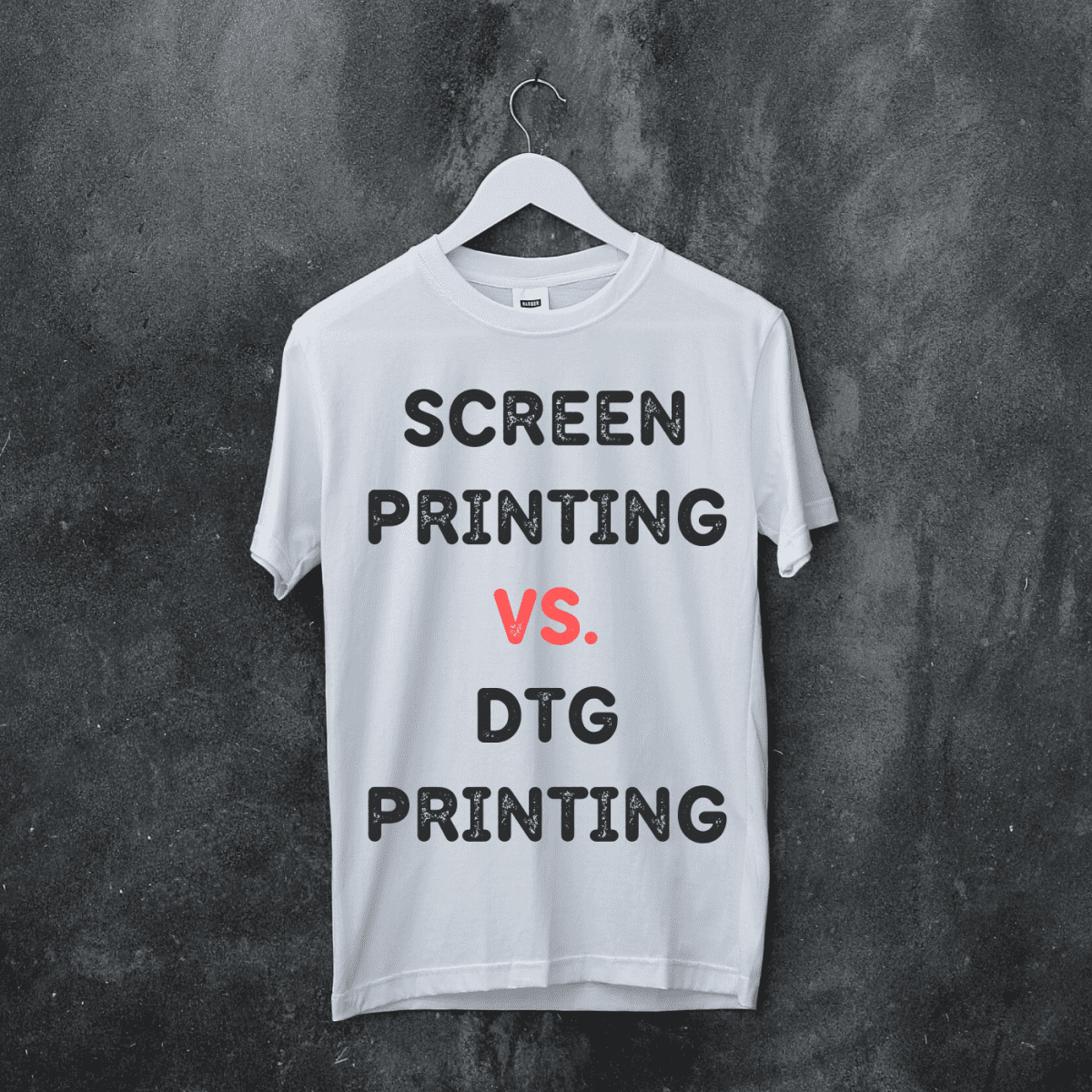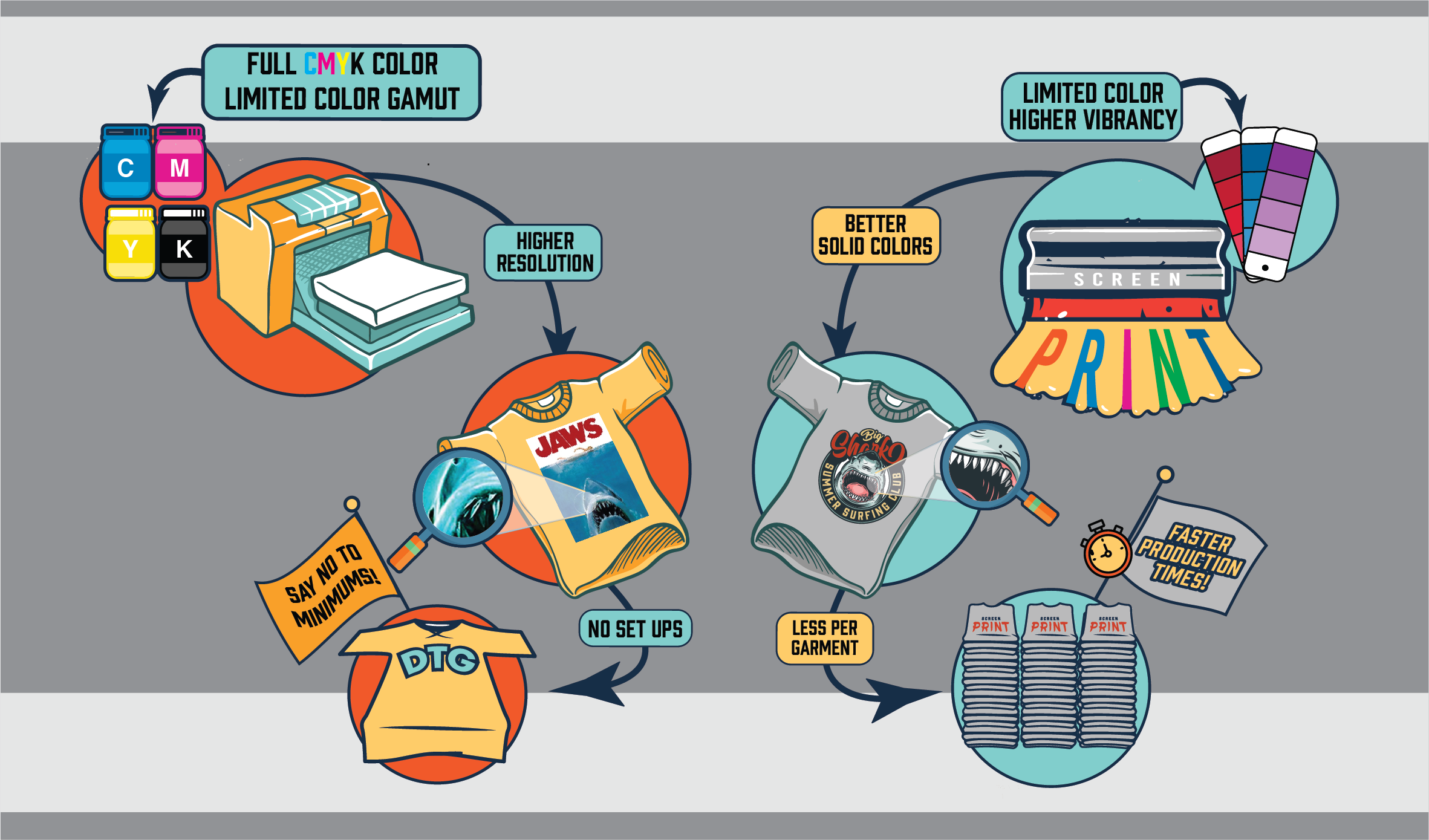Tx Tees Fundamentals Explained
Tx Tees Fundamentals Explained
Blog Article
The Best Strategy To Use For Tx Tees
Table of ContentsSome Ideas on Tx Tees You Should KnowThe Only Guide to Tx TeesTx Tees - TruthsHow Tx Tees can Save You Time, Stress, and Money.The smart Trick of Tx Tees That Nobody is Talking AboutAbout Tx TeesGet This Report about Tx Tees
Include up various other expenses, like the number of energies it takes to run the shop and the price of ink and emulsion per layout. Take the print below.The solution must only be a few cents because you 'd just require to coat one screen for this task. Exactly how much should you charge per tee shirt to make a revenue? Normally, printers attempt to make up to 45% earnings on a print work. Right here's a table to aid you identify that: overall cost per product percent of wanted earnings as a decimal (instance:.25 or.45) profit made per product per task Now let's speak about the earnings of DTF.

With DTF, you can publish a handful of t-shirts, or just one. Both display printing and DTF have their specific niches in the world.
The Best Guide To Tx Tees
The very best way to understand? Ask around and see what printing shop like yours are doing. t-shirt printing. Try both out and see which you like far better
When you're choosing what sort of printing method to use for printing your artwork styles on your garments, it is necessary that you know the differences in between these two techniques so you can make best use of outcomes while minimizing costs. Screen printing is the most typically used strategy for printing designs on fabrics.
DTG printing is additionally called place or straight to garment printing due to the fact that it prints just what is needed rather than making a screen as screen printers do. https://www.avitop.com/cs/members/txtees02.aspx. Screen printing functions by screen filler squeegee display printing ink screen mesh screen, after that transferring the photo to garment using warm and/or pressure
The DTG printer utilizes special dye-sublimation inks that are applied right into a pre-designed image by an electronic printing system. The inks end up being component of the fabric, permitting lively colors and remarkable information. It's additionally called area or direct to garment printing due to the fact that it publishes only what is required rather than making a display as display printers do.
Tx Tees Things To Know Before You Buy
It's much faster - you can print a fullcolor picture in mins, as opposed to hours for screen printing. Second, there's no set up time or expenses entailed - you can publish any kind of design you like, without having to produce a screen first. Third, there's no waste - since display printers screen print one design at a time, they have to screen each shade independently.
The paper is really pricey and can only be used once. Once it's printed on, it needs to be disposed of. - The initial purchase price is less than the ahead of time financial investment of DTG printers- You can publish multi-color styles one screen each time rather than needing to publish each shade individually like DTG printing.

About Tx Tees
Instead of utilizing display mesh as display printers do, dye sublimation printers utilize laser modern technology to transfer your pictures onto garments or paper. A warm process transfers the dye from its solid-state straight right into the gas stage which consequently integrates it onto fabric substrates when they are quickly heated up to high temperature levels under high stress.
Sublimation printing is eco-friendly. It utilizes less water than screenprinting, and due to the fact that it doesn't include the usage of hazardous solvents, it's risk-free for all kinds of apparel. The dye sublimation inks are also odor-free when healed, unlike screen printers that use damaging chemicals throughout the display printing procedure that leave behind an undesirable smell.
They additionally conserve cash on pricey tools like direct exposure devices given that dye sublimation printers don't need a UV exposure unit or a flash cure oven that is commonly made use of in display printing (t-shirt printing). What is direct to garment printing (DTG Printing)? DTG printing is an electronic screenprinting procedure that publishes straight onto material utilizing specialized inkjet printers
Getting My Tx Tees To Work
DTG printing supplies several advantages over conventional screenprinting, including the capacity to publish photographic quality photos, higher shade vibrancy, and the capacity to publish designs on darker textiles. DTG printers work by warming the fabric ink until it becomes a gas. The gas after that permeates the fabric, bonding with the fibers to create an irreversible print.

Screen printers simply prepare their display after that start printing up until they run out of product or ink.- There is a variety of knowledgeable screen printers around the world, which can be handy for newbies. - It's a slower procedure - screen printers commonly need to wait on the ink to dry before they can publish the following shade- Screen printers require manual labor, so there's a greater understanding contour and it takes longer to generate a top notch style- Screen printing isn't as exact as DTG printing, so you might obtain some "blood loss" of colors from one component of the photo onto one more if not done properly.
What Does Tx Tees Mean?
Rather of using display mesh as screen printers do, color sublimation have a peek at this website printers use laser technology to transfer your images onto garments or paper. A warm process moves the color from its solid-state directly into the gas stage which consequently integrates it onto textile substrates when they are quickly warmed to heats under high stress.
Sublimation printing is environmentally friendly. It uses much less water than screenprinting, and due to the fact that it doesn't include making use of damaging solvents, it's risk-free for all types of clothing. The color sublimation inks are likewise unsmelling when treated, unlike display printers that utilize unsafe chemicals during the screen printing process that leave behind an undesirable odor.
They also save money on pricey tools like direct exposure devices because color sublimation printers don't call for a UV exposure system or a flash cure stove that is normally made use of in display printing. What is direct to garment printing (DTG Printing)? DTG printing is a digital screenprinting process that prints straight onto textile using specialized inkjet printers.
Our Tx Tees Diaries
DTG printing provides several advantages over standard screenprinting, consisting of the capacity to publish photo top quality pictures, better color vibrancy, and the capacity to publish styles on darker fabrics. DTG printers function by warming the fabric ink till it transforms right into a gas. The gas after that penetrates the fabric, bonding with the fibers to produce an irreversible print.
Report this page